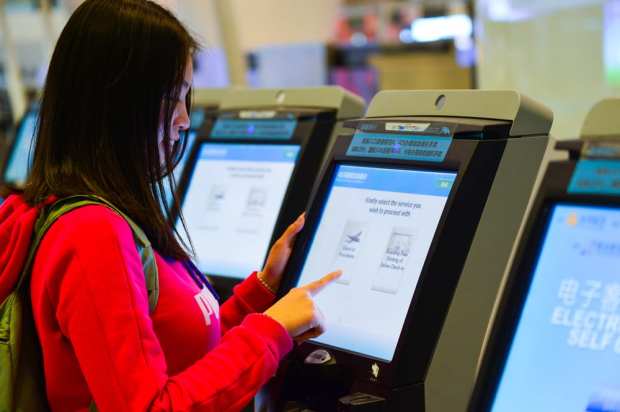Kiosks Flourish In International Markets

Kiosks are gaining more power in retail, especially as it becomes ever more obvious that consumers are not quite ready to cut ties with physical forms of buying, contrary to the early fever dreams of the eCommerce age. The trend is playing out with increasing force outside the U.S., as a recent Amazon move has demonstrated.
News recently emerged that Amazon wants to roll out kiosks in India that will enable consumers to purchase hardware, including its Kindle eBook reader, the Echo, its smart speaker and the Fire TV Stick. The plan involves installing 100 kiosks in malls across India by the end of 2019, which could be the early stage of Amazon creating more of a physical retail presence in the country.
Amazon’s interest in physical retail is nothing new, given its investment in Whole Foods and Amazon Go stores, among other moves. But the fact that one of the main retail players on the planet is making a kiosk push in a growing, heavily populated market speaks to the international appeal of such devices.
Asia Appeal
According to one analysis, kiosks make sense in Asia as a way to capture sales from the large consumer segment that still loves shopping in person and has increasing money to spend on retail purchases. “Locals love kiosks and small stores. There are seven million family-run mom-and-pop stores that dominate retail outside big cities in China,” that analysis reads. “These kiosks are often the source of largest retail growth as well, such as in countries like India.”
Globally, “low unemployment, coupled with more engaging technology, will continue to drive retail investment in self-serve kiosks” of all types, according to Stuart Armstrong, group president and chief revenue officer of ComQi Inc., a content management software and solutions provider, in another report. According to the report, Armstrong “sees 2019 gaining an additional three to five percentage points over the 15 to 17 percent one-year revenue gains that have characterized the last few years. He said his company has purchase orders in hand, and customers are planning large technology expansions in North America, Latin America, Europe and Asia.”
Indeed, when it comes to retail-focused devices, “the global expansion of mobile commerce has given self-serve kiosks a new importance, as retailers and brand marketers seek to integrate rising eCommerce activity with brick-and-mortar stores,” according to Kiosk Marketplace.
Kiosk Spending
There are other reasons, too.
For instance, kiosks can increase consumer spending, no matter the market, according to various reports and QSR-focused kiosk research from PYMNTS. The increase in consumer spending when ordering through self-service kiosks is 30 percent. Léa French Street Food in Illinois, for example, found that kiosks encouraged customers to customize their orders. As a result, the restaurant noticed orders at the kiosk had much higher check sizes than counter orders. For example, kiosk orders had an average check size of $17.17, while counter orders had an average check size of $9.79.
When it comes to the future of kiosks, one market that certainly will lead the way is China, which by nearly all accounts is ahead of every other country when it comes to forms of unattended retail, including retail kiosks.
As Bloomberg has noted, kiosks have gained significant attention – that is, capital – from major retail and technology players. “Names from Alibaba Group Holding Ltd. and Tencent Holdings Ltd. to Walmart Inc. and Sequoia have poured more than $1.7 billion into startups such as Mr. Fresh and Xingbianli (Gorilla Convenience) that for now offer little more than tricked-out vending machines or kiosks,” the news provider said. The appeal of kiosks? Much of it has to do with serving the masses of office workers in cities such as Shanghai, the report said.
Unattended retail, while nothing new, is certainly undergoing an update in the early 21st century, and much of that motion is coming from kiosks. Consumers can expect more kiosk action coming from India, China and other international markets.
